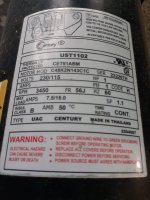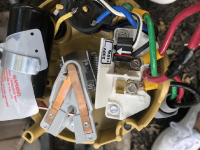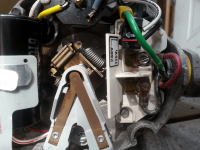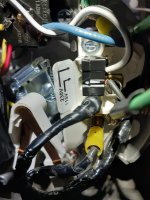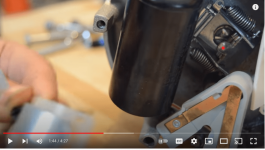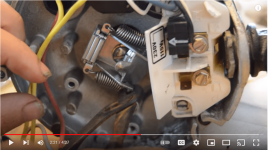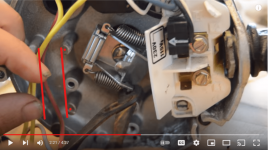A new motor makes a humming sound without running. Please help me!
Here is my motor's story.
1) The pump motor made a humming sound and not running. After a few seconds, the breaker tripped.
2) Replaced a new capacitor; tried two new capacitors; shaft can move manually, no blockage in the impeller.
3) The pump motor made a humming sound again. Immediately the breaker tripped.
4) Disconnected the motor from the breaker.
5) The breaker does not trip without connecting the motor and so I thought the problem is from the motor.
6) Installed a new motor (same model, see attached).
7) The pump motor made a humming sound and the motor did not run but the breaker does not trip. The shaft can move manually, no blockage in the impeller.
8) Replaced a new capacitor but till a humming sound and the breaker does not trip
9) Replaced the switch (V-shape) connected to the capacitor: the motor is not still running.
What else I can do? I am suspicious the new motor might be bad and so might buy a new motor again.
Attached the name plate of motor.
Here is my motor's story.
1) The pump motor made a humming sound and not running. After a few seconds, the breaker tripped.
2) Replaced a new capacitor; tried two new capacitors; shaft can move manually, no blockage in the impeller.
3) The pump motor made a humming sound again. Immediately the breaker tripped.
4) Disconnected the motor from the breaker.
5) The breaker does not trip without connecting the motor and so I thought the problem is from the motor.
6) Installed a new motor (same model, see attached).
7) The pump motor made a humming sound and the motor did not run but the breaker does not trip. The shaft can move manually, no blockage in the impeller.
8) Replaced a new capacitor but till a humming sound and the breaker does not trip
9) Replaced the switch (V-shape) connected to the capacitor: the motor is not still running.
What else I can do? I am suspicious the new motor might be bad and so might buy a new motor again.
Attached the name plate of motor.


